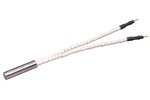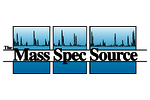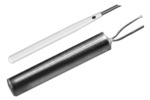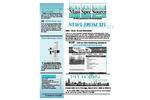- ▶
- Heaters/Source
- ▶
- Agilent Heaters and SensorsMass Spectrometry, Scientific Supplies & ManufacturingScientific Instrument Services 5973 Source Heater Tamper Resistant Allen Wrench 5973/5975 Quad Sensor 5985 Source Heater Assembly Agilent Interface Heater Assembly 5971 Interface Heater

- ▶
- LiteratureApplication Notes Adsorbent Resins Guide Mass Spec Tips SDS Sheets FAQ MS Calibration Compound Spectra Manuals MS Links/Labs/ Organizations MS Online Tools Flyers on Products/Services Scientific Supplies Catalog About Us NextAdvance Bullet Blender® Homogenizer Protocols Micro-Mesh® Literature Instrumentation Literature Agilent GC/MS Literature SIS News / E-Mail Newsletter NIST MS Database - Update Notifications

- ▶
- SIS News / E-Mail NewsletterJan 2021: Wiley 12 & NIST 20 Jun 2020: NIST 20 Release 2020 Aug 2017: NIST 17 Release 2017 May 2017: SIS at ASMS 2017 May 2017: NIST 17 Sep 2016: New Website Launch Aug 2016: IMSC 2016 Aug 2016: New Ion Transfer Tubes May 2016: ASMS 2016 May 2016: Agilent Dry Pump May 2016: Wiley Registry 11th February 2016: PITTCON 2016 February 2016: GC columns Dec 2015: GC Columns Special Sep 2015: SIS at AVS 2015 Jul 2015: Ion Transfer Tubes May 2015: SIS at ASMS 2015, thermal desorption poster barley, manufacturing Feb 2015: SIS at Pittcon 2015, TD, homogenizer Jan 2015: Save big on vacuum & MS products in 2015 Dec 2014: Gifts for your lab Nov 2014: NIST 14 and Wiley 10 mass spectral libraries Jun 2013: Thermal desorption on beer, ion transfer tubes & capillaries Apr 2013: Service kits for Waters MS Mar 2013: Bullet Blender® homogenizer, DigiVac vacuum gauge May 2012: Long Life Yttria Coated Filament Repairs Apr 2012: SIS rotary vane vacuum pump and filters Mar 2012: Imtakt HPLC columns, New Era syringe pump May 2011: NIST, SIMION, MS replacement parts Oct 2009: Lymtech sterile wipes, Ametek/Dycor leak detector filaments Sep 2009: Source heater/sensor for Agilent 5973/75, oil mist elements Older newsletters 1993-2009... Older What's New 1995-2001...

- ▶
- Older newsletters 1993-2009...
- ▶
- June 2000 (html) (This Page)
VOL. XXII, NO.2 June 2000
Features in the June 2000 MS Source Newsletter
This is a compilation of the materials in the SIS June 2000 newsletter which was printed and mailed out in early June 2000. To receive your copy of this newsletter or to get on our mail list, please update your name on our mail list and request this newsletter by filling out our survey form.
![]() Vacuum Pump Exhaust
Filter Article
Vacuum Pump Exhaust
Filter Article
The first of three articles reporting on the effectiveness of filters designed for use on the exhaust of vacuum pumps.
![]() Replacing a DeTech Electron
Multiplier in the Agilent 5973 MSD
Replacing a DeTech Electron
Multiplier in the Agilent 5973 MSD
Replacing an electron multiplier can be successfully accomplished in just 15 minutes after the instrument is cooled down to the touch. All that is required are a pair of clean room gloves and the DeTech Model 2300 Electron Multiplier.
Beginning in July, SIS will be distributing a monthly e-mail newsletter on SIS products, services, promotions, news and other mass spectrometer related information. To receive this free newsletter fill in the attached form with your e-mail address and return it to SIS by mail or drop it off at the ASMS meeting.
![]() Mass Spec Desk Reference by O.David
Sparkman
Mass Spec Desk Reference by O.David
Sparkman
The Mass Spec Survival Guide - Whether you are a newcomer, teacher, manager, or experienced practitioner engaged in mass spectrometry, you will find this handy desk reference an invaluable tool for improving your results.
![]() ASMS
2000 Mass Spec User Survey
ASMS
2000 Mass Spec User Survey
Please fill out and return this form to update your name on our mail lists to receive one or more of the following:
- SIS 2000-2001 GC MS Catalog in Printed form
- SIS 2000-2001 GC MS Catalog on CD
- Mass Spec Source Newsletter in Printed Form
- New - SIS E-Mail Newsletter
The Tradition Continues at ASMS
Once again SIS will be attending the annual ASMS meeting in Long Beach California on June 12 - 15. SIS will be providing our traditional ice cream treats in our ASMS suite. The SIS hospitality suite hours will be Monday through Wednesday from 7:30 - 10:30 pm. Stop by and receive our free 10-in one screwdriver after filling out the attached survey form. We have invited three other companies to share our suite. These include DeTech, the fastest growing manufacturer of mass spectrometer detectors, Prolab Resources, a service company and manufacturer of replacement data systems, and Mass Sensors, a manufacturer of small mass spectrometers for process analytical and educational uses. In addition SIS will be sponsoring lunchtime presentations at our hospitality suite. (See next page.)
1. Controlling Laboratory Air Contamination from Rotary Vacuum Pumps by Using a Two-Stage Vacuum Pump Exhaust System. by John Manura - Poster # 1270
2. Analysis of Silicone Contaminants on Electronic Components by Thermal Desorption GC-MS. by Eric Butrym - Poster # 1425
SIS Topical Seminars at ASMS
SIS is sponsoring three introductory seminars at this year's ASMS conference. Each presentation is designed as an introduction to the selected topic. These walk-in sessions will be held from 12:15 - 1:00 on each day in our hospitality suite, Hyatt Seaview C (first floor).
Monday Lunch
Applications of Thermal Desorption - Volatile and Semi-Volatile Analysis in Air by Stuart Batterman, University of Michigan
Air sampling using sorbents, thermal desorption, and gas chromatography is a versatile method for identifying and quantifying trace levels of volatile organic compounds (VOCs). Points to be discussed include the appropriate choices of sorbents and method parameters in order to accommodate a wide range of compounds and high humidity. The advantages of an automated short-path system for minimizing artifacts, losses, and carry-over effects are illustrated. As examples, results will be presented that demonstrate the performance of a thermal desorption method for 77 VOCs using laboratory and field tests and a dual sorbent system (Tenax® GR, Carbosieve SIII). Laboratory tests showed that the method requirements for ambient air sampling were easily achieved for most compounds, e.g., using the average and standard deviation across target compounds, blank emissions were ≤0.3 ng/sorbent tube for all target compounds except benzene, toluene and phenol; the method detection limit was 0.05 ±0.08 ppb, reproducibility was 12 ±6%, linearity as the relative standard deviation of relative response factors was 16 ±9%, desorption efficiency was 99 ±28%, samples stored for 1 to 6 weeks had recoveries of 86 ±9%, and high humidity samples had recoveries of 102 ±11%. Due to sorbent, column and MSD characteristics, performance was somewhat poorer for phenol groups, ketones, and nitrogen containing compounds. The laboratory results were confirmed in an analysis of replicate samples collected in two field studies that sampled ambient air along roadways and indoor air in a large office building. Replicates collected under field conditions demonstrated good agreement except at very low concentrations or for large (> 4 l volume) samples of high humidity air. Overall, the method provides excellent performance and satisfactory throughput for many applications.
Tuesday Lunch
How AMDIS Could Have Saved My Sister's Marriage by O. David Sparkman
AMDIS attempts to reconstruct original mass spectra for individual components in arbitrarily complex GC/MS and LC/MS reconstructed total ion current (RTIC) chromatograms and, if a target library is provided, AMDIS can directly identify target compounds. AMDIS is especially useful when an RTIC chromatographic peak represents multiple components. Regardless of each component's concentration, pure mass spectra are deconvoluted for analysis.
AMDIS has been designed to reconstruct "pure component" spectra from complex RTIC chromatograms even when components are present at trace levels. For this purpose, observed chromatographic behavior is used along with a range of noise-reduction methods. AMDIS is distributed with specialized libraries (environmental, flavor and fragrance, and drugs and toxins), that were derived from the NIST98 Library. AMDIS has a range of other features, including the ability to search the entire NIST98 Library with any of the spectra extracted from the original data file. It can also employ retention index windows when identifying target compounds and can make use of internal and external standards maintained in separate libraries. A history list of selected performance standards is also maintained.
Wednesday Lunch
LC/MS Fundamentals and Applications by Mike Lee, Milestone Development Services
Abstract: The combination of high-performance liquid chromatography and mass spectrometry (LC/MS) has had a significant impact on industrial applications over the past decade. Continual improvements in LC/MS interface technologies combined with powerful features for structure analysis, qualitative and quantitative, have resulted in a widened scope of application. An iterative cycle of "what is it?" and "how much is there?" continues to fuel the tremendous growth of LC/MS. This talk will review the fundamentals of LC/MS and provide perspective on strategies for method development. Current applications of LC/MS technologies and emerging industry trends will also be discussed .
"The Mass Spec Source" Editorial Board & Newsletter Staff
John J. Manura
Christopher W. Baker
Dr. Steve Colby
Eric Butrym
J. Philip Tielmann, Production



